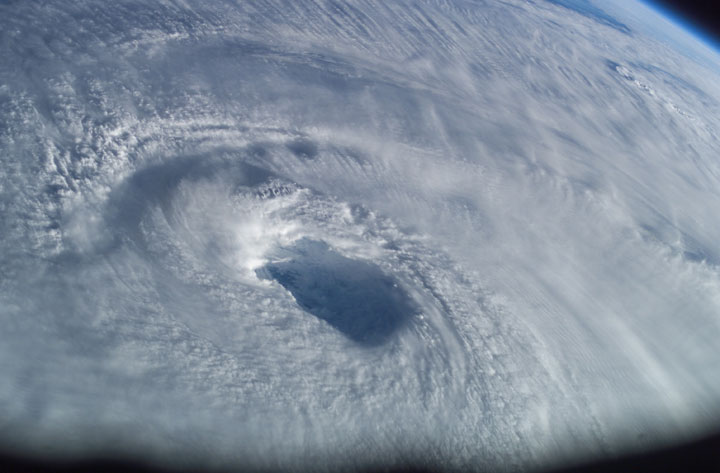Weather Illuminated
Hurricane Isabel in the Atlantic Ocean

Image Credit: NASA/JSC/Mike Trenchard
Images taken from satellites in space in different types of light help us better predict weather and understand the science that drives it. For example, infrared light reveals detail in cloud structures that would otherwise be invisible. Doppler radar, which measures the direction and speed of a moving precipitation, uses microwave light to tell us when to expect rain or snow. Astronaut Ed Luca captured this image in visible light of the eye of Hurricane Isabel as he passed overhead on the International Space Station on September 15, 2013. Details of the hurricane's structure can help meteorologists determine just how powerful such a storm may be as well as determine the path it may take.
Listen to audio version (English)
Download high-res image file | Download caption as .zip file
Clima Iluminado - Huracán Isabel, Océano Atlántico
Las imágenes tomadas por los satélites en el espacio con diferentes tipos de luz nos ayudan a predecir mejor el clima y comprender la ciencia asociada al fenómeno. Por ejemplo, la luz infrarroja revela detalles en estructuras de nubes que de otro modo serían invisibles. El radar Doppler, que mide la dirección y velocidad de la precipitación en movimiento, utiliza la luz de microondas para decirnos cuándo esperar la lluvia o la nieve. El astronauta Ed Luca capturó esta imagen en luz visible del ojo del huracán Isabel cuando pasó por encima en la Estación Espacial Internacional el 15 de septiembre de 2013. Los detalles de la estructura del huracán pueden ayudar a los meteorólogos a determinar cuán potente puede ser una tormenta, así como determinar la trayectoria que puede tomar.
Download high-res image file | Download caption as .zip file



